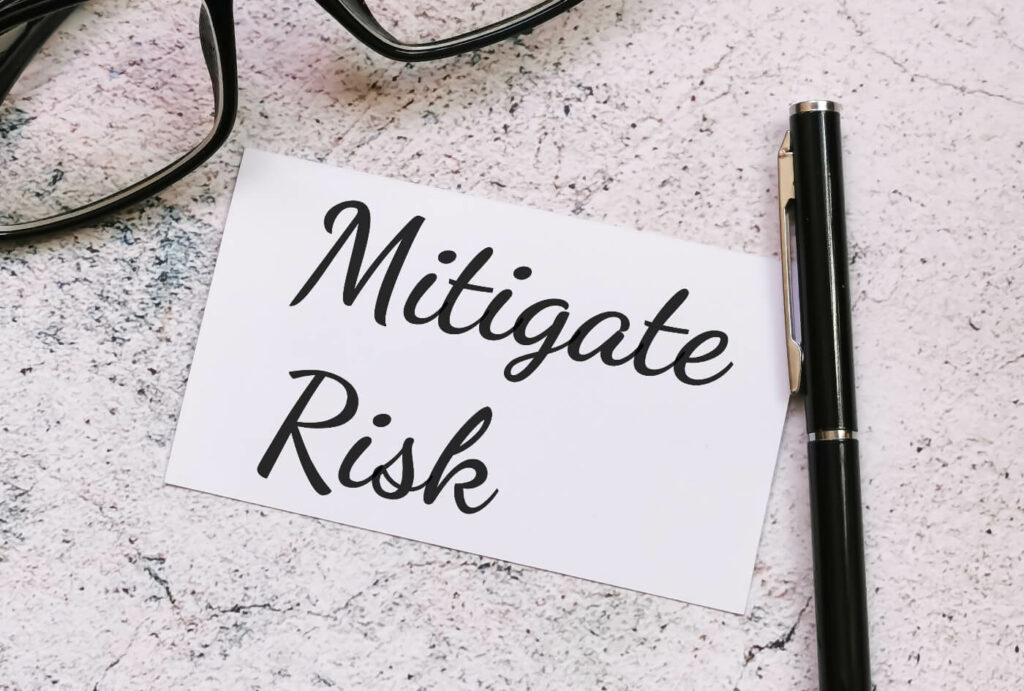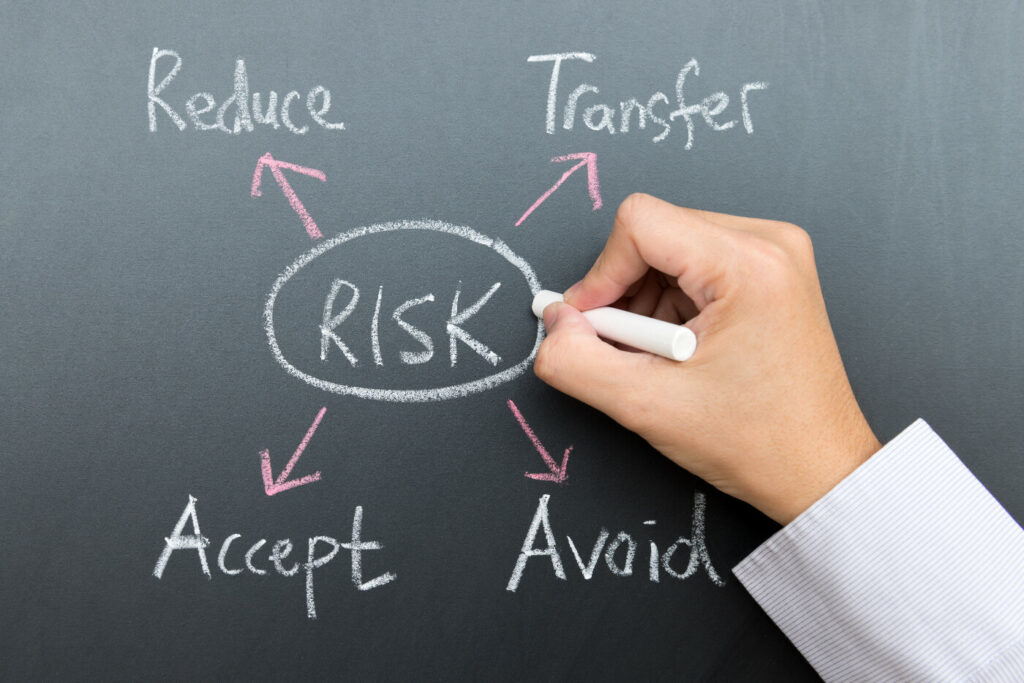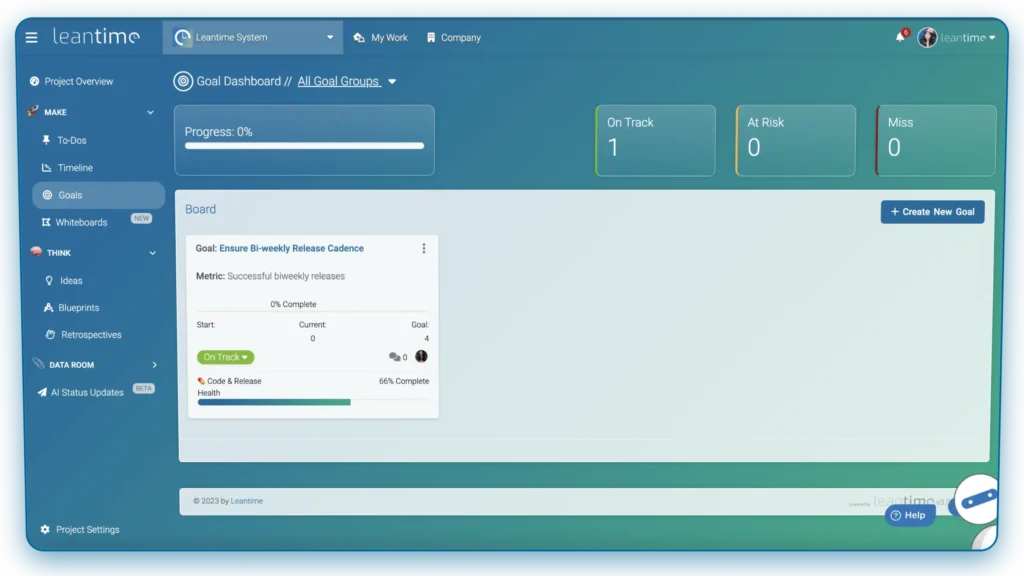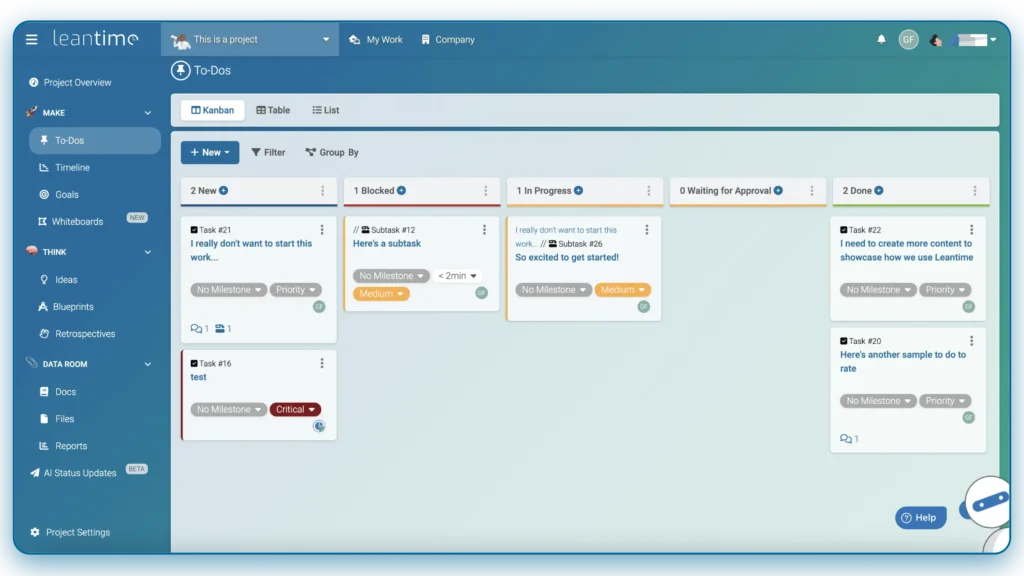Risk Mitigation Strategies for Your Business

Estimated reading time: 15 minutes
In the ever-evolving business landscape, risks and uncertainties are as inevitable as change itself. But are these risks merely stumbling blocks, or can they be stepping stones to greater resilience and success?
Whether you’re an entrepreneur or a seasoned corporation, understanding and effectively managing risks is pivotal to the longevity and prosperity of your business.
We will explore the strategies successful businesses use to anticipate potential threats and turn them into opportunities for growth and innovation, uncovering the art and science of risk mitigation. We’ll examine every critical aspect of risk appetite, from financial risks to operational disruptions, technological challenges, and unforeseen market shifts.
Let’s transform risk into reward, uncertainty into certainty, and challenges into triumphs.
Table of contents
- What is Risk Mitigation?
- The Importance of Risk Mitigation for Businesses
- Benefits of Risk Mitigation
- Types of Risks Your Business May Encounter
- Types of Risk Mitigation Strategies
- Best Practices for Mitigating Risks
- How Leantime Can Help Mitigate Risk
- Key Risk Indicators (KRIs) and Early Risk Identification
- Risk Mitigation as Part of the Broader Risk Management Process
- Leveraging Best Practices and Industry Standards
- Conclusion
What is Risk Mitigation?
Risk mitigation refers to minimizing potential risks that could negatively impact a project or business. This is achieved by creating and implementing a plan to manage, eliminate, or reduce the occurrence of setbacks. Once the risk mitigation plan is executed, it is monitored to track progress and determine whether any adjustments are required.
“In brief, risk mitigation refers to the strategies and methods implemented to reduce risk to an acceptable level for the business. While adopting a risk management plan from another business may be tempting, your plan should be tailored to your specific business strategy.”
Investing time in developing a risk assessment can play a significant role in maintaining a healthy relationship with clients and preventing loss of business. Let’s examine what you aim to achieve when reducing risk factors in more detail.
The Importance of Risk Mitigation for Businesses
In today’s dynamic and uncertain business landscape, effective risk mitigation strategies have become more critical than ever before. Businesses must proactively identify, evaluate, and mitigate all potential risks that could impact their operations, reputation, and bottom line.
Whether financial, operational, legal, or strategic, every type of risk can have significant consequences for a business. Therefore, they must adopt a comprehensive risk management approach, including risk assessment, treatment, and monitoring.
The business can maintain stability, protect its assets, and ensure long-term success despite the increasingly complex and uncertain business environment.
Benefits of Risk Mitigation
A risk mitigation strategy offers numerous benefits, including improved decision-making, reduced financial loss, enhanced operational efficiency, and increased stakeholder confidence.

Types of Risks Your Business May Encounter
With these types of risk mitigation used, it is essential to understand the different types of risks that your business may face. By identifying these risks, you can develop appropriate mitigation strategies to reduce their impact on your organization. Some common types of risks that may be encountered include:
Compliance Risks
These and other risks are associated with the potential failure to comply with laws, regulations, and industry standards that apply to your business. Non-compliance can result in fines, penalties, and damage to your company’s reputation.
Legal Risks
Legal risks involve potential litigation or disputes arising from contractual disagreements, employee issues, intellectual property infringement, or other legal matters. Addressing legal risks may require the involvement of legal counsel and could lead to costly settlements or judgments.
Strategic Risks
Strategic risks are the potential negative consequences that can arise from the decisions and actions taken by your business. These risks can arise due to various factors, such as poor market positioning, competitor actions, or ineffective business strategies. They can adversely affect the overall success of your business.
With risk mitigation, it is important to continually evaluate and adjust your business plan to stay ahead of potential threats. This may involve conducting market research, examining emerging trends, and developing contingency plans that can be implemented quickly in response to unforeseen events.
By effectively managing strategic risks, you can increase your business’s resilience and improve its chances of long-term success.
Reputational Risks
Reputational risks are among the most significant threats that a company may face in today’s highly competitive business environment. They can arise from various sources, such as negative publicity, social media backlash, or customer dissatisfaction. They can damage a company’s reputation, making it harder to attract and retain new customers and ultimately impacting its bottom line.
To mitigate risk, it is vital for companies to maintain open communication with all stakeholders and respond proactively to any issues that may arise. It is crucial to identify possible risks, assess their impact, and develop a comprehensive strategy to address them.
This strategy should include measures to monitor and manage online and offline conversations about the company and respond quickly and effectively to any negative comments or feedback.
In addition, companies should establish clear policies and procedures for addressing reputational risks, including guidelines for communicating with stakeholders, handling crises, and managing social media.
They should also invest in training their employees to handle reputational risks and ensure that everyone in the organization understands the importance of protecting the company’s reputation.
Overall, managing reputational risks requires a proactive and strategic approach. By maintaining open communication with stakeholders, monitoring conversations, responding quickly and effectively, and investing in employee training, companies can protect their brand image and public perception and ultimately ensure their long-term success.
Operational Risks
Operational risks encompass any factors that may occur that could disrupt your business’s day-to-day operations, such as equipment failure, supply chain disruptions, or human error.
To minimize operational risks, it is crucial to implement effective management processes, maintain up-to-date technology and equipment, and ensure employees are well-trained and follow established procedures.

Types of Risk Mitigation Strategies
In an ever-changing business landscape, it’s crucial to have a solid understanding of the common strategies to protect your organization from potential hazards. These strategies can help you navigate challenges and reduce risks’ overall impact.
Let’s explore the four common strategies for managing and reducing risks:
Avoidance
Avoidance is a proactive approach to risk mitigation, where the business takes measures to prevent the risk from occurring in the first place. This might involve altering business plans or processes to eliminate the potential risk. One example, a company might decide not to enter a new market with high compliance risks, or it might choose to discontinue a product line with significant legal risks.
Reduction
Reduction focuses on minimizing the likelihood of a risk happening or reducing its impact if it does occur. This strategy involves implementing processes, technologies, or training that can help mitigate the potential negative effects of a risk.
For instance, a business might invest in employee safety training to reduce the chances of workplace accidents or implement strong cybersecurity measures to protect against data breaches.
Transference
Transference involves passing the risk consequence to a third party, such as an insurance company, a contractor, or a supplier. By transferring the risk, companies can effectively manage a risk event’s potential financial and operational implications.
Examples of risk transference include purchasing insurance policies to cover potential losses or outsourcing certain tasks to specialized vendors who can better manage specific risks.
Acceptance
Acceptance means embracing the risk as it stands, either because the possibility of reward outweighs the potential negative consequences or because the probability of the risk occurring is minimal or its impact is minor.
This strategy is often used when the cost of mitigating the risk is greater than the potential loss, or when the risk is deemed an inherent part of doing business. In these cases, companies might choose to accept the risk and focus on managing the consequences if the risk event occurs.
In conclusion, understanding and implementing these common risk mitigation strategies can help your business effectively manage potential threats and pave the way for continued growth and success.

Best Practices for Mitigating Risks
In order to effectively manage and reduce risks in your business, it is essential to follow a set of best practices. These practices aim to provide a systematic and comprehensive approach to risk management, ensuring that potential threats are addressed proactively.
Identifying Risks
The first step in mitigating risks is to identify them. This involves thoroughly analyzing your business operations, processes, and environment to uncover potential threats and vulnerabilities. By identifying risks early, taking actions and appropriate measures to prevent or minimize their impact on your business.
Assessing Likelihood and Impact
Once you have identified the different risks, assessing their probability of occurrence and potential impact on your business is crucial. This will help you determine the severity of each risk and prioritize your risk mitigation efforts and resources accordingly.
Understanding the probability and repercussions of risks enables you to make informed decisions about which risks require immediate attention and which can be monitored over time.
Prioritizing Risks
This is a critical step in the risk mitigation process. By ranking risks based on their probability and impact, you can focus your efforts on taking action on the most significant threats first. This ensures that resources are allocated efficiently and that high-priority risks are managed effectively.
Treating Risks with Appropriate Actions
Once you have prioritized risk levels, creating and implementing appropriate risk mitigation strategies is essential. These can include avoidance, reduction, transference, or acceptance, depending on the nature and severity of each risk.
The choice and types of risk and strategy should be tailored to your specific business needs and objectives, ensuring that risks are managed to align with your overall goals.
Monitoring Risks Regularly
Risk management is an ongoing process that requires continuous monitoring and assessment. Regularly reviewing the status of identified risks and tracking the effectiveness of implemented mitigation strategies is essential for maintaining a proactive approach.
This also allows you to identify new risks that may emerge and adapt your strategies accordingly.
Reporting on Risks to Stakeholders
Effective communication is a key component. It is important to keep stakeholders informed about identified risks, their potential impact, and the steps being taken to mitigate them. Transparent reporting fosters a culture of accountability and trust, ensuring that all parties are aligned in their efforts to manage and mitigate risks.
Following these best practices, you can create a strong business risk management foundation. Utilizing project management software like Leantime can aid in reducing risks through features such as customization, automation, collaboration, and visualization, ensuring a thorough approach to handling and controlling potential business risks.
How Leantime Can Help Mitigate Risk

Effective risk mitigation requires a comprehensive approach that incorporates various tools and strategies. Leantime’s project management software offers several features that can help organizations manage and risk avoidance more effectively:
Customization Features
Leantime provides customization features that allow your business and organization to tailor their risk management processes to their unique needs. These customization features enable the software to be tailored to the unique requirements of each organization, ensuring that it can effectively support its risk management processes.
By providing customizable features, Leantime makes it easier for organizations to identify and manage other business risks promptly, which can lead to better operational efficiency, increased productivity, and improved overall performance.
With Leantime, businesses and organizations can have peace of mind knowing that their risk management processes are customized to their specific needs and are being managed effectively.
Automation to Streamline
Automation is a key aspect of risk mitigation, as it helps to reduce the likelihood of human error and improve efficiency. Leantime offers automation features that can streamline risk mitigation processes, such as automated task assignments and notifications, allowing them to stay on top of certain risks and take prompt action when needed.
Collaboration Tools for Effective Teamwork
Effective risk mitigation often requires collaboration among team members and across departments. Leantime’s collaboration tools, such as shared workspaces and real-time communication features, facilitate teamwork and ensure that all stakeholders are on the same page when it comes to addressing risks.

Visualization for Better Understanding
Understanding the potential impact of risks is crucial in developing appropriate mitigation strategies. Leantime offers visualization features, such as risk heat maps and Gantt charts, that help employees better comprehend the severity and likelihood of risks, enabling them to make more informed decisions on how to address them.
Centralization of Information for Easy Access
Having a centralized location for risk information is essential for efficient risk management. Leantime provides a central hub where you can store and access all relevant risk data, making it easier for team members to stay informed about potential risks and take appropriate action to mitigate them.
Key Risk Indicators (KRIs) and Early Risk Identification
Effective risk mitigation involves understanding the importance of Key Risk Indicators (KRIs) and recognizing the benefits of assessing risks. This section delves into these critical aspects of risk management.
Importance of KRIs
Key Risk Indicators (KRIs) are essential metrics that measure the likelihood of an adverse event occurring and its possible effect on the organization. These indicators help identify potential threats and prioritize their mitigation efforts.
By monitoring KRIs, most organizations can proactively address risks before they escalate and cause significant damage. In the context of risk mitigation, KRIs serve as a valuable tool to assess the effectiveness of current strategies and make necessary adjustments to protect the business.
Benefits of Early Risk Identification
It’s important for successful risk mitigation. Identifying risks at an early stage allows the organization to address them more effectively and reduce their potential impact. Some benefits include the following:
- Greater Preparedness: Early risk identification enables organizations to develop comprehensive risk mitigation plans, ensuring that all potential issues are accounted for and dealt with accordingly.
- Better Resource Allocation: By identifying risks early, an organization can allocate resources more efficiently, prioritizing high-risk areas requiring immediate attention and minimizing potential harm.
- Increased Adaptability: Early identification of other risks allows organizations to adapt and respond to changes more effectively, reducing the likelihood of potential disruptions and promoting business resilience.
Risk Mitigation as Part of the Broader Risk Management Process
Risk mitigation is an essential component of the broader risk management process. It focuses on reducing the impact of potential risks by developing specific plans and actions to manage, eliminate, or limit setbacks as much as possible.
Connection Between Risk Mitigation and Risk Management
Risk management encompasses identifying, assessing, and prioritizing risks, followed by implementing a risk mitigation plan. These strategies are designed to address certain risks and minimize their impact on the business.
By incorporating risk mitigation into risk monitoring, businesses can proactively address potential setbacks and maintain a stable, secure, and profitable environment.
Importance of having a risk mitigation plan
A well-developed risk mitigation plan is crucial, as it helps promptly and efficiently address and identify risks. A risk mitigation plan includes essential steps such as identifying, assessing, prioritizing, treating, monitoring, and reporting risks.
Adhering to these guidelines, businesses can proficiently handle potential challenges and ensure the seamless operation of their activities.
Risk mitigation focuses on avoidance, reduction, transference, and acceptance, allowing an organization to tackle different types of risks, including compliance, legal, strategic, reputational, and operational risks.
Leantime, a project management software, can help your team of employees mitigate risks through features like customization, automation, collaboration, and visualization. By utilizing Leantime, you can enhance their processes and ensure a successful risk mitigation plan.
Leveraging Best Practices and Industry Standards
Adopting best practices and industry standards is important for businesses to develop effective risk mitigation strategies. Organizations like the Occupational Safety and Health Administration (OSHA) and the International Organization for Standardization (ISO) provide guidelines and standards that can help create comprehensive risk mitigation plans.
Adopting Best Practices From Organizations Like OSHA and ISO
OSHA provides safety and health regulations for various industries, ensuring that organizations maintain a safe working environment and minimize the risk of accidents and injuries.
Complying with OSHA standards reduces the likelihood of operational risks and helps a business avoid legal and reputational risks associated with workplace accidents.
Similarly, ISO offers various international standards covering various aspects of business operations and software development, including quality management, information security, and environmental management.
By adopting ISO standards, a business can ensure consistency in its processes, reduce the likelihood of errors, and enhance its overall risk mitigation efforts.
Continuously Refining Risk Mitigation Plans
Risk mitigation is an ongoing process that requires a business to continually monitor, assess, and update their plans. By staying informed about the latest industry standards and best practices, businesses can adapt their risk mitigation strategies to address new or evolving risks.
This proactive approach to risk management ensures that the business remains resilient and can swiftly respond to potential challenges.
Leveraging best practices and industry standards is crucial to an effective risk mitigation strategy. By adopting guidelines from organizations like OSHA and ISO and continuously refining risk mitigation plans, the business can successfully navigate possible risks and secure their long-term success.
Conclusion
In conclusion, risk mitigation is crucial to managing a successful business. As we have discussed, a business may encounter various types of risks, such as compliance, legal, strategic, reputational, and operational risks.
To effectively mitigate these risks, companies must employ widely used risk reduction techniques like avoidance, reduction, transference, and acceptance.
One of the best ways to mitigate risks is by following a systematic approach that includes identifying, assessing, prioritizing, treating, monitoring, and reporting risks.
Implementing these practices ensures that the business is well-prepared to address potential challenges and maintain a competitive edge in their respective industries. Furthermore, incorporating risk mitigation best practices and industry standards can provide additional support in managing risks effectively.
Lastly, utilizing project management software like Leantime can greatly assist in mitigating risks. With customization, automation, collaboration, and visualization features, Leantime empowers your business to manage its risks better and ensure continued success.
As business navigates an ever-changing landscape, it is essential to prioritize risk mitigation efforts to safeguard the company’s future.
By implementing effective strategies and leveraging tools like Leantime, organizations can confidently face potential challenges head-on and maintain a strong foundation for continued growth.




